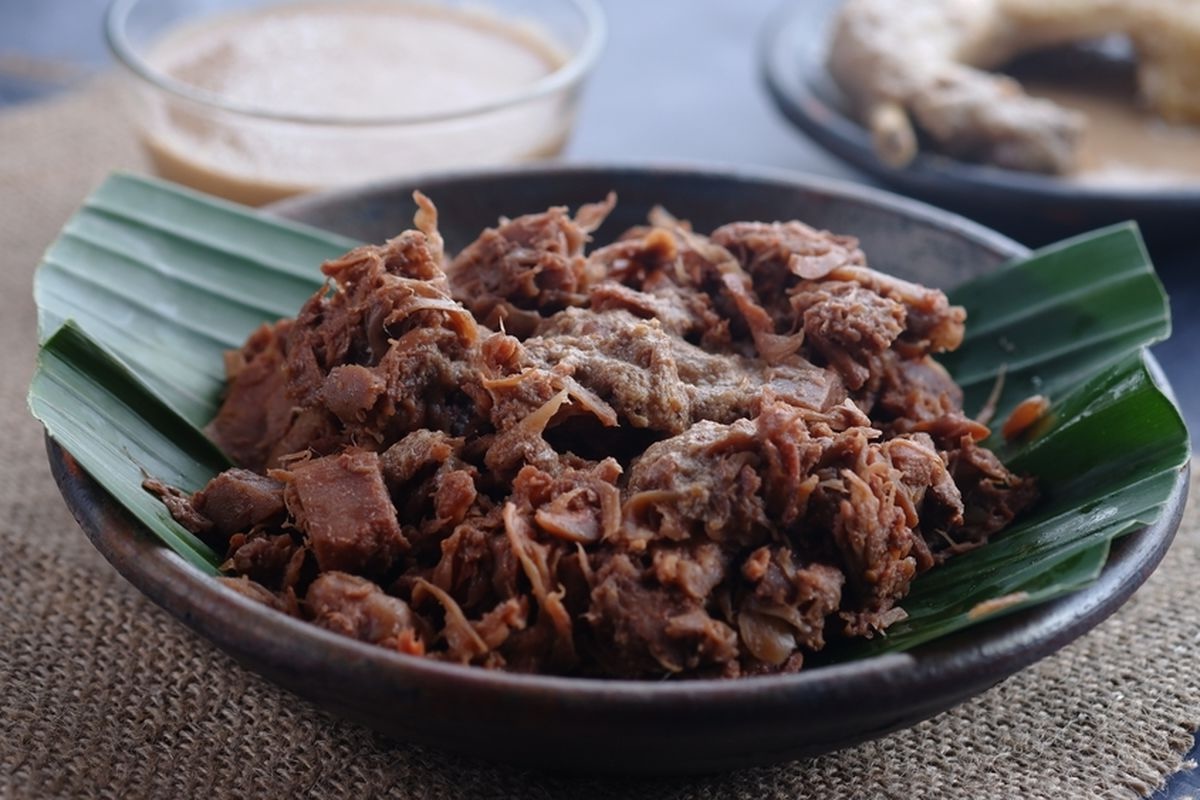
Gudeg is a traditional Indonesian dish from Yogyakarta, made from young jackfruit stewed for several hours with palm sugar, coconut milk, and various spices. This sweet and savory delicacy has a unique flavor that has captivated food lovers for generations. But what makes Gudeg so special? Gudeg is not just a meal; it's a cultural experience. From its origins in the royal kitchens of Java to its status as a street food favorite, Gudeg has a rich history and a variety of interesting facts that make it more than just a dish. Whether you're a foodie or a culture enthusiast, learning about Gudeg will give you a deeper appreciation for this iconic Indonesian cuisine. Ready to dive into the world of Gudeg? Let's explore 27 fascinating facts about this beloved dish!
What is Gudeg?
Gudeg is a traditional Javanese dish from Indonesia, known for its unique taste and rich history. This sweet and savory dish is made primarily from young jackfruit, slow-cooked with coconut milk and a blend of spices. Let's dive into some fascinating facts about this beloved culinary delight.
Origins of Gudeg
Understanding where Gudeg comes from helps appreciate its cultural significance.
- Gudeg originated in Yogyakarta, a city on the island of Java in Indonesia.
- The dish dates back to the 16th century, during the Mataram Sultanate era.
- Gudeg was initially a royal dish, served in the palaces of Javanese kings.
- Over time, it became a popular street food, enjoyed by people from all walks of life.
Ingredients and Preparation
The ingredients and cooking process of Gudeg are what make it so special.
- Young jackfruit, known as "nangka muda," is the main ingredient.
- Coconut milk, or "santan," gives Gudeg its creamy texture.
- Palm sugar, or "gula jawa," adds a distinct sweetness.
- Traditional spices include coriander, galangal, bay leaves, and lemongrass.
- Gudeg is slow-cooked for several hours, sometimes up to 12 hours, to achieve its rich flavor.
- The dish is often cooked in a clay pot, which enhances its taste.
Varieties of Gudeg
Gudeg comes in different styles, each with its own unique twist.
- Gudeg Kering is a dry version, with less coconut milk, resulting in a drier texture.
- Gudeg Basah is the wet version, with more coconut milk, making it saucier.
- Gudeg Solo, from the city of Solo, is known for being sweeter and darker in color.
- Gudeg Yogyakarta is less sweet and has a lighter color compared to Gudeg Solo.
Serving Gudeg
How Gudeg is served can vary, but it’s always a feast for the senses.
- Gudeg is typically served with steamed rice.
- It often comes with side dishes like "opor ayam" (chicken in coconut milk) and "sambal goreng krecek" (spicy beef skin).
- Hard-boiled eggs, marinated in the same spices, are a common accompaniment.
- Fried tofu and tempeh are also popular sides.
- A sprinkle of fried shallots adds a delightful crunch.
Cultural Significance
Gudeg is more than just food; it’s a part of Javanese culture and tradition.
- Gudeg is a staple during Javanese celebrations and ceremonies.
- It symbolizes prosperity and abundance.
- Many families have their own secret recipes, passed down through generations.
- Gudeg is often featured in traditional Javanese weddings.
Modern-Day Gudeg
Gudeg has evolved, but it remains a beloved dish in Indonesia and beyond.
- Gudeg can now be found in canned form, making it accessible worldwide.
- There are Gudeg restaurants in major cities across Indonesia.
- Some chefs have created fusion dishes, combining Gudeg with Western cuisine.
- Gudeg festivals are held annually in Yogyakarta, celebrating this iconic dish.
Gudeg: A Taste Worth Savoring
Gudeg isn't just a dish; it's a cultural experience. This sweet and savory jackfruit stew, with its rich history and unique preparation, offers a glimpse into the heart of Javanese cuisine. From its humble beginnings in Yogyakarta to its status as a beloved national treasure, Gudeg has captured the taste buds of many. Whether enjoyed with rice, chicken, or eggs, each bite tells a story of tradition and flavor.
Trying Gudeg is like taking a culinary journey through Indonesia. Its distinct taste, combined with the warmth of Javanese hospitality, makes it a must-try for food enthusiasts. So, next time you're in Indonesia or at an Indonesian restaurant, don't miss out on this delightful dish. Gudeg is more than food; it's a celebration of culture and taste that you won't forget.
Was this page helpful?
Our commitment to delivering trustworthy and engaging content is at the heart of what we do. Each fact on our site is contributed by real users like you, bringing a wealth of diverse insights and information. To ensure the highest standards of accuracy and reliability, our dedicated editors meticulously review each submission. This process guarantees that the facts we share are not only fascinating but also credible. Trust in our commitment to quality and authenticity as you explore and learn with us.
